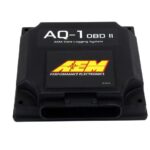Understanding OBDII readiness monitors is crucial for passing emissions tests, especially for older vehicles. For car owners dealing with 1996 and 1997 models, a common question arises: Can you pass an OBDII emissions test with two monitors not ready? The answer, fortunately, is often yes, but with important caveats.
Understanding OBDII Readiness Monitors
OBDII (On-Board Diagnostics II) systems are designed to monitor the performance of your vehicle’s emission control systems. These systems run self-tests, and the results are indicated by “readiness monitors.” When a monitor is “ready,” it means the system has been tested and is functioning correctly. If a monitor is “not ready,” it signifies that the test hasn’t been completed, which can be due to various reasons, including recent battery disconnection or diagnostic trouble code (DTC) clearing.
For 1996 and 1997 vehicles, regulations generally allow for up to two monitors to be “not ready” and still pass the emissions test in many jurisdictions. This provides some leeway for older vehicles that might have difficulty completing all monitor tests.
The “Two Monitors Not Ready” Rule for 96-97 Models
The allowance for two “not ready” monitors is a significant point for owners of these older OBDII systems. It acknowledges that these early systems can be more sensitive and might not always achieve readiness for every monitor. However, it’s vital to confirm the specific regulations in your local area, as emissions testing rules can vary by region and state.
If you find yourself with more than two monitors not ready, or if you’re struggling to get even two monitors to a “ready” state, there are troubleshooting steps you can consider. One method, often discussed in online forums and by automotive technicians, involves resetting the Powertrain Control Module (PCM), also known as the Engine Control Unit (ECU).
Resetting the PCM: A Potential Solution
Resetting the PCM can sometimes help in setting monitors to “ready.” This procedure essentially clears the adaptive memory of the PCM, forcing it to relearn engine parameters and rerun the monitor tests. One method, as described in some automotive communities, involves a specific sequence to discharge the PCM capacitors:
- Disconnect the POSITIVE battery terminal.
- Touch the disconnected POSITIVE cable to a ground (like the engine block or A/C compressor bracket) for about 30 seconds. This step is crucial for discharging the PCM capacitors.
- Reconnect the battery cable.
- Turn the ignition switch to the “On” position (without starting the engine).
- Turn the headlights “On,” then “Off.”
- Turn the ignition key “Off.”
This process is believed to erase the “adaptive memory” in the PCM and initiate a “Fast Learn Mode.” After this reset, when you start the engine and bring it to operating temperature, the PCM will begin to collect new data for its adaptive memory over the next 50 warm-up cycles.
Image: A modern Engine Control Unit (ECU), illustrating the complexity of vehicle computer systems.
Important Considerations and Cautions
While resetting the PCM might help in some cases, it’s important to understand its limitations:
- Not a Guaranteed Fix: PCM reset is not a guaranteed solution for “not ready” monitors. Underlying mechanical or sensor issues might be preventing monitors from setting.
- Temporary Solution?: If a genuine problem exists, resetting the PCM might only temporarily clear the “not ready” status. The issue could reappear, and the monitors may become “not ready” again.
- Loss of Learned Data: Resetting the PCM will erase learned adaptations, potentially affecting engine performance temporarily until the PCM relearns.
- Consult a Professional: If you consistently have “not ready” monitors, or if resetting the PCM doesn’t resolve the issue, it’s advisable to seek professional diagnosis. A qualified mechanic can use diagnostic tools to pinpoint the root cause of the problem, which could range from faulty sensors to vacuum leaks or other mechanical issues.
Modern diagnostic tools, like those from Autel, can provide valuable insights into OBDII system status, read DTCs, and even guide you through drive cycles to help set monitors to “ready.”
Conclusion: Navigating OBDII Readiness on Older Vehicles
For owners of 1996 and 1997 vehicles, understanding the “two monitors not ready” rule is key to successfully passing emissions tests. While a PCM reset might be a troubleshooting step to consider, it’s essential to approach it with caution and recognize its limitations. If you’re facing persistent “not ready” monitors, professional diagnostics are recommended to ensure your vehicle meets emissions standards and operates efficiently. Remember to always verify the specific emissions testing regulations in your local area to ensure compliance.


